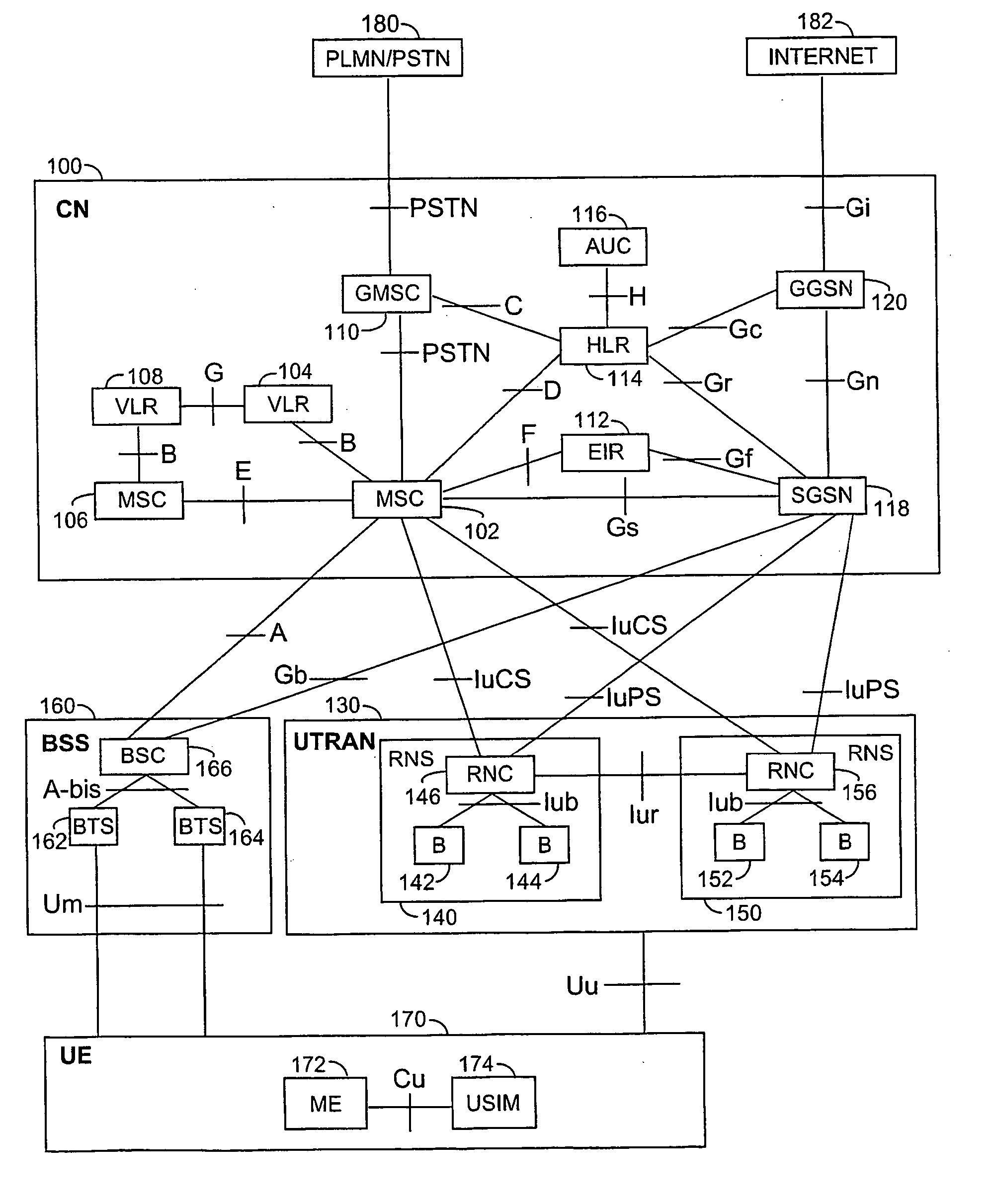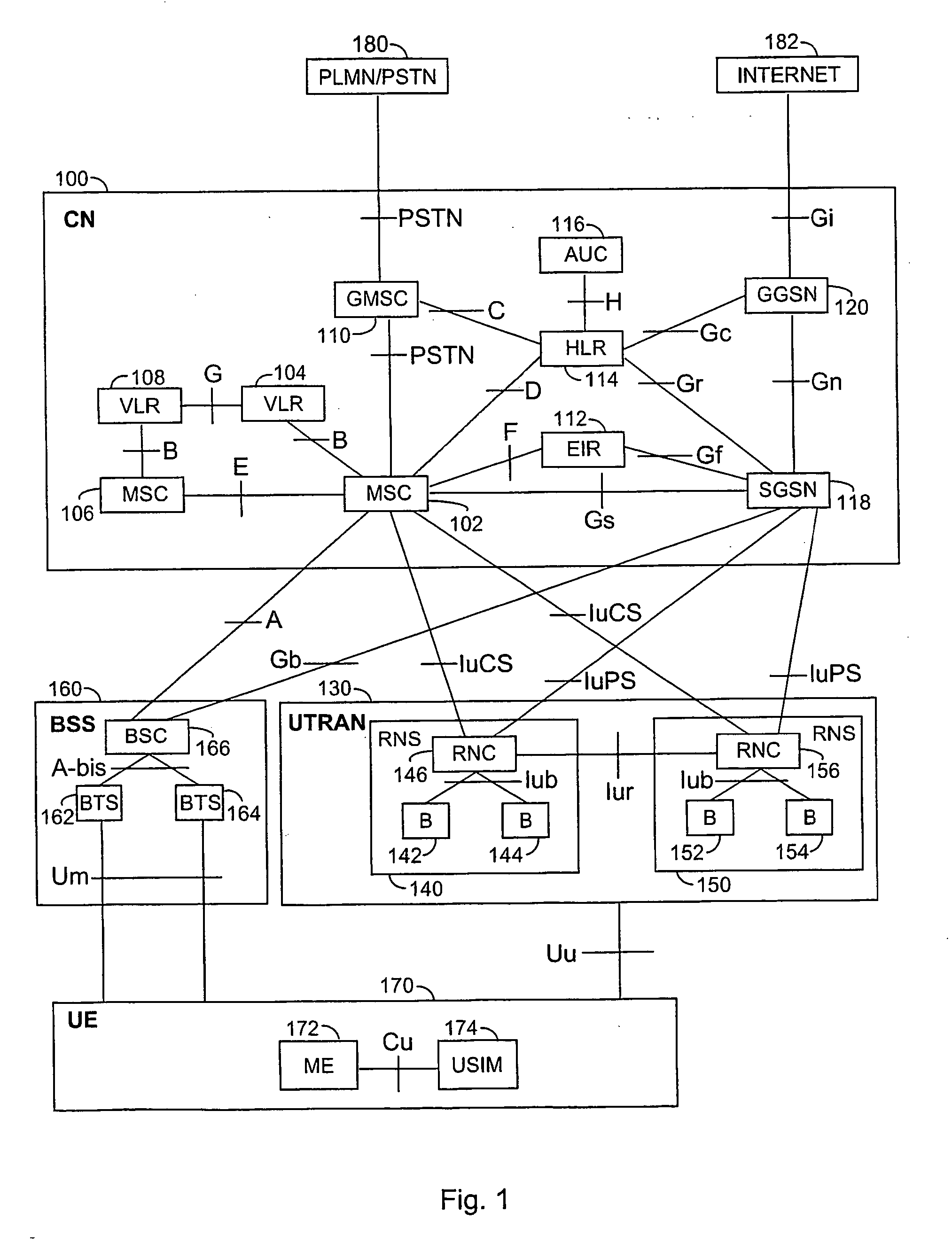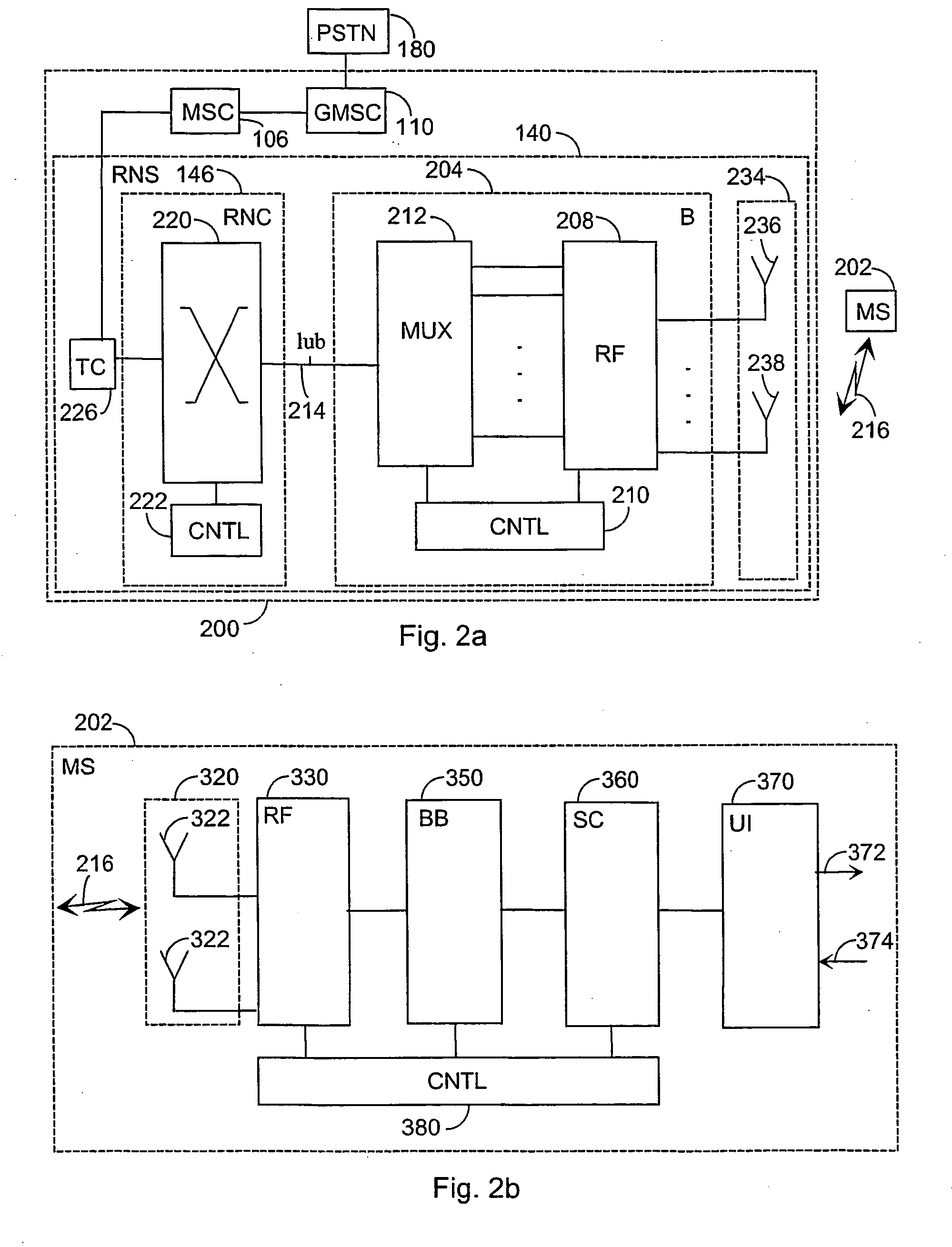Data transfer method in radio system
a radio system and data transfer technology, applied in diversity/multi-antenna systems, baseband system details, wireless communication, etc., can solve problems such as inefficient frequency diversity, interference to telecommunications, delay in transmission,
- Summary
- Abstract
- Description
- Claims
- Application Information
AI Technical Summary
Benefits of technology
Problems solved by technology
Method used
Image
Examples
Embodiment Construction
[0017] Since second generation (2G) radio systems and third generation (3G) radio systems as well as different hybrids thereof, i.e. so-called 2.5G radio systems, are already being used all over the world and under constant development, embodiments will be described in a radio system illustrated in FIG. 1 wherein network elements of different generations coexist. In the description, the 2G radio system is represented e.g. by a GSM (Global System for Mobile Communications). The 2.5G is represented e.g. by a GPRS (General Packet Radio System). The 3G radio system is represented e.g. by a system which is based on the GSM system and which utilizes 3G EDGE (Enhanced Data Rates for Global Evolution) technology, and systems known at least by the names IMT-2000 (International Mobile Telecommunications 2000) and UMTS (Universal Mobile Telecommunications System). The embodiments are not, however, restricted to these systems described as examples but a person skilled in the art can also apply ...
PUM
 Login to View More
Login to View More Abstract
Description
Claims
Application Information
 Login to View More
Login to View More - R&D
- Intellectual Property
- Life Sciences
- Materials
- Tech Scout
- Unparalleled Data Quality
- Higher Quality Content
- 60% Fewer Hallucinations
Browse by: Latest US Patents, China's latest patents, Technical Efficacy Thesaurus, Application Domain, Technology Topic, Popular Technical Reports.
© 2025 PatSnap. All rights reserved.Legal|Privacy policy|Modern Slavery Act Transparency Statement|Sitemap|About US| Contact US: help@patsnap.com



